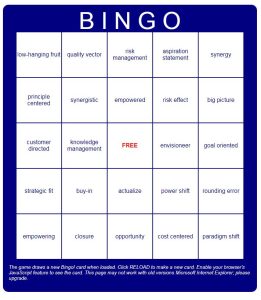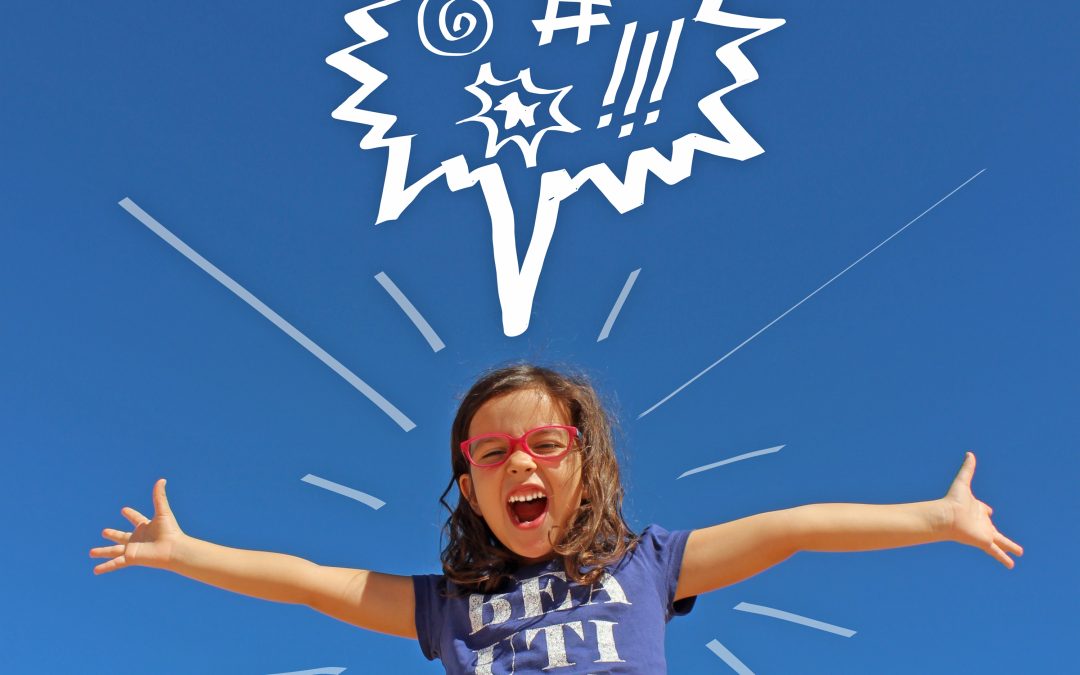
by Ken Krause | Jan 10, 2018 | Blog
One of the core tenets of journalism (and public relations, which at most colleges is part of the School of Journalism) is the use of AP style when writing. AP, of course, stands for the Associated Press, whose manual and rules are drilled into journalism students from the day they begin writing for their school newspaper (or whatever aspiring writers write for in school these days).
For a PR professional, use of AP style demonstrates that you are a journalism insider. That’s very important when you’re pitching a byline article, or a press release, or some other piece of content that needs to be reviewed and approved by an editor. It gives you a certain level of credibility, or at least signals to an editor that he or she won’t have to spend untold hours bringing your writing up to par.
Failure to use it, on the other hand, is generally seen as an admission that you are an ignorant hack whose writing skills would be best applied to warning labels on pet supplies. No one wants that.
This, of course, is the reason Amendola Communications is very careful about conforming to AP style. It benefits not only our agency but our clients.
Still, for those who aren’t familiar with AP style, some of its peccadillos can be a bit off-putting. They’re not used to seeing things written that way, and their preference for the approach they’re used to can become a bone of contention that slows down the writing and approval process.
Here’s the reality of the situation. When you are writing for your own blog, or marketing materials, or internal memos, etc. go ahead and let your preferences dictate the style. But when you’re writing something you’d like to have published by an independent media outlet, it’s important to follow AP style.
So what does that mean from a practical standpoint? Glad you asked! Here are five examples of the differences between regular people style and AP style. Those of you who are familiar with it please feel free to add additional common uses in the comments section.
Capitalizing corporate titles or not
This is the one that probably causes more consternation between Amendola Communications account managers and clients, so let’s start there.
Most people are taught in business writing courses to capitalize someone’s title, such as President, or Chief Medical Officer, or Vice President of Some Made Up Area that Sounds Good on LinkedIn. It’s viewed as disrespectful not to capitalize the title.
That is not the case in AP style. Titles are never capitalized, unless they are used as part of the person’s identity. Which means you can refer to President Trump with capital letters, but you would write Donald J. Trump is president of the United States.
This, by the way, is one of the easiest tests for editors and journalists to see who knows what they’re doing. Get it right in your press release and you’ve removed a barrier to publishing.
Spelling out acronyms
While the healthcare industry loves it some acronyms, AP style is not as much of a fan. So while you may believe everyone you’re communicating with knows EHR stands for electronic health record, AP style still demands that you spell it out anyway.
Usually, you will spell it out first, then put the acronym in parenthesis afterward, i.e., electronic health record (EHR). The exception is in quotes, which means if you’re going to use an acronym in a quote try to spell it out ahead of time, just to be safe. Of course, some acronyms that are widely known, such as FBI or CIA, do not need to be spelled out. But if you’re writing about them and you work in health IT, you probably have bigger issues than AP style facing you.
Bonus fun fact #1: According to the AP Style guide, using the initialism CEO by itself is acceptable, although they still recommend spelling it out somewhere else. Other titles, such as CFO or CMO, must always be spelled out because they are less universal.
Writing out numbers
This is another of those interesting AP style oddities. When writing out single numbers from 0-9, AP style dictates you spell out the number rather than use the numeral. So zero for 0, one for 1, all the way up to nine (9). Once you’re in double digits, you use the numerals, so 10, 11, and so forth.
That also applies to numbers used in combination, which can get very awkward. You would write “there are 10 three-bedroom homes on this block” or “Put the three of us down for 12 medical devices each.”
State abbreviations
The AP has its own set of state abbreviations that are preferred, especially for use in a dateline. They are different (and longer) in most cases from the more-familiar postal codes, so it’s worth looking up. Or, you can just follow this link, although they’re not laid out quite as nicely as you might like.
Here are a couple of examples. The postal code for California is CA, but the AP style abbreviation is Calif. The postal code for Arizona, where Amendola Communications is headquartered, is AZ whereas the AP style abbreviation is Ariz.
Two-word states tend to get different treatment. While New Hampshire uses an N and an H for both, the postal code is NH while the AP style abbreviation is N.H. The extra periods make a difference.
Bonus fun fact #2: When you’re in the body of a press release, AP style stresses spelling out the name of the state rather than using abbreviations of any kind.
Bonus fun fact #3: Certain large cities, such as Chicago, Los Angeles, Phoenix, and New York, don’t require a state at all in the dateline. In fact, including a state again makes you look like you don’t know what you’re doing.
Other types of abbreviations
For pretty much any other type of abbreviation, you’re always going to use periods after each letter. That includes professional credentials (M.D. instead of MD, Ph.D. instead of PhD) and time designations (p.m. instead of pm, E.S.T. instead of Eastern Standard Time).
Yes, it can be very odd-looking, especially when you say an event will begin at 1:00 p.m. E.S.T., and yes, all those periods kind of get in the way. But that’s the way, uh-huh uh-huh, they like it. (Sorry, channeling my inner Kate Donlon there.)
So many rules
This is just a small sampling of some of the most common issues that seem to crop up from time to time. There are many more. In fact, the AP puts out an entire manual with everything you could possibly wonder about, which they will be more than happy to sell you if you’re interested. It’s available in both paper and electronic form.
Or, you can just count on your friendly neighborhood PR pros to get it right for you. It’s all part of the service.

by Lisa Chernikoff | Oct 4, 2017 | Blog
As you work on your content strategy, think about this: According to a recent study, the average person now loses concentration after only eight seconds. I would ask you to pause and think about that but then I’ll risk of losing the remaining seconds of your attention entirely if I haven’t already. As a “fun fact,” researchers noted that even goldfish which are “notoriously ill-focused” have an average attention span of nine seconds.
So, whether that fact is fun or concerning is still be determined, but it really isn’t that shocking. This study simply quantifies the impact of a highly digitized lifestyle on the human brain. After all, we live in a world where our phones are constantly buzzing with emails, texts, news alerts, and social media notifications. We live in a world where”
Sorry, I got distracted for a moment. Did you know that Kim and Kanye are expecting their third child via surrogate? My phone just vibrated with that “breaking” news, as well as four work emails, three personal emails, and two trivial text messages. And even if celebrity gossip isn’t your guilty pleasure, you’re likely experiencing a similar scenario every hour of every day.
But to be clear, the aha moment from this study is not that goldfish are smarter than us. It’s an aha moment for us as marketing and public relations professionals. The study has profound implications for those of us who communicate for a living. To be successful, we must adapt our strategies and tactics to the reality of eight second attention spans.
Why evolving content doesn’t mean dumbing it down
In today’s world of digital and information overload, crafting content that is relevant and meaningful for your target audience is mission-critical. Remember that having shorter attention spans doesn’t mean that your customers are not decision-makers. It doesn’t mean that they’re less intelligent. It doesn’t mean that they don’t have the same pain points. It just means that they need to absorb information differently. It just means that despite downloading your white paper, they’re probably not getting past page one. There’s no shame. It’s the new normal.
That’s why evolving your content marketing is not about dumbing down the information. It’s not about simplifying or going back to basics. It’s about making your content snackable. In fact, your new bite-sized content can still convey the same concepts and ideas as the longer pieces but that content must be more concise and free of fluff.
Even more importantly, it must provide just a taste to satisfy their brief hunger and keep their interest. It must leave the audience wanting more of your content snacks. That’s what marketing is all about.
How to create tasty content snacks a recipe for success
Snackable content for the eight second attention span is just a new way of creating, organizing, and promoting content. To create tasty content snacks, you don’t need to start from scratch. You don’t need all new ingredients. Your content kitchen is likely full of big, heavy content meals which can be remixed and reused to fit the new snackable content mold. The good news is that one content meal equals several content snacks.
Now, let’s enter the content kitchen and see how to turn those content meals into content snacks. Here are three examples:
- Transform your white paper into an infographic and a cheat sheet with must-do’s.
- Transform your case study into a checklist of best practices, or a series of checklists that span everything from implementation to training and optimization.
- Transform your 30-minute webinar into a sequence of 30 second videos that highlight that key learning objectives.
And rather than being sad about the lost of art of white paper reading, keep in mind that multiple content snacks derived from the same content meal not only convey the same messages but also can easily become a lead nurturing campaign or useful follow-up references for your sales team to share with prospects.
I think it’s time to stop mourning the white paper. Instead, it’s time to cook up some bite-sized content. After all, it’s just waiting to be eaten.

by Philip Anast | Sep 27, 2017 | Blog
As we strive to be better communicators and storytellers, it often helps to get out of our comfort zones and read inspirational literature that can teach us new things. We often find those types of books in classical literature, or from the latest fiction and non-fiction books. Sometimes, “How-to” guides also help.
That happened to me recently when I picked up the book, “A Mind for Numbers: How to Excel at Math and Science (Even if You Flunked Algebra).” You may be asking yourself, “Why would a PR guy be reading a book about math and science?” Isn’t the reason you pursued journalism and then PR in the first place is that you stunk in those other areas?
Well, as it turns out, author Barbara Oakley, Ph.D., did, too. But through a gradual retraining of her brain, she earned a Ph.D. in systems engineering after completing bachelor’s and master’s degrees in Electrical Engineering, and Electrical and Computer Engineering, respectively. She now teaches engineering at Oakland University in Detroit, and is a leading educator in the area of STEM education.
While her book is primarily geared toward helping high school and college students successfully navigate the aforementioned disciplines, it’s ultimately a guide to improving skills and techniques for learning how to learn. And that can be useful for people in any profession, including PR.
Two modes of thinking
For instance, Oakley describes the two modes of thinking: the focused and diffuse.
The focused mode is like the flashlight setting that casts a bright light in a narrow area. It’s a direct approach to solving problems that requires rational, analytic and sequential ways of thinking. When we’re working intently on a project, like writing a white paper or drafting a PR plan/strategy, we use the focused mode of thinking.
But the diffuse mode also plays an important role in those projects. It taps other parts of the brain and is akin to turning your flashlight setting to casting a wider yet less powerful light. As its name suggests, the diffuse mode is wider and big picture. It’s a resting state in our brains. It works quietly in the background and allows us to form new insights. It kicks in when our minds wander, or when we take a break from a focused task to walk, jog, listen to music, sleep or play video games.
Oakley’s point, backed by the hundreds of research studies that inform her book, is that we must maximize both types of thinking to learn and tackle problems.
If we’re working on a specific assignment, it’s important to step away from that work at intervals to allow the diffuse mode to enter the picture. By pursuing a leisure activity or working on some other job assignment, we allow our diffuse mode of thinking to continue working on the first task at hand and lend new insights. The diffuse mode opens up possibilities that we may not have considered in the focused mode and prevents us from believing that only one approach to a project is the single way of accomplishing it.
Taking a better approach
Here are some other practical tips that I gleaned from the book that we can translate to our own profession and help us do our jobs better:
- Avoid procrastination because it prevents the diffuse mode from helping a project or media campaign. While the luxury of time is not always possible in our profession, especially in crisis communication situations, building a timetable of assignments and deadlines, with thoughtful consideration, can help improve the overall response and results.
- Don’t cram to memorize a speech or the big PR plan presentation in one day. Rehearse and study over a series of days and/or weeks. Research shows that we retain the material better, avoid reading the screen verbatim, and make more genuine presentations.
- Avoid reading literature or meeting notes over and over again to learn the material. Instead, use a technique called “pause and recall,” i.e., turn away from the literature and notes after each page or several pages, and describe the concept in one’s own words; that’s the way we build chunks that form strong neural connections in long-term memory.
- Take a 21-minute nap to refresh the brain (but don’t tell the boss). The brain’s neural networks need to be reset from time-to-time, which freshens our outlooks toward problem-solving
- “Lady Luck favors those who try.” Sometimes, we feel downtrodden if a media pitch fails to elicit that desired interview, for example. Perhaps it’s time to let the diffuse mode help; alternatively, we could pick up the phone, be persistent (within reason), and converse with that target reporter directly. In my experience, with professionalism and respect for the journalist on the other end, the odds are good.
As in any learning endeavor, Dr. Oakley’s observation rings true: “The better I got (at math), the more I enjoyed what I was doing. And the more I enjoyed what I was doing, the more time I spent on it.”

by Ken Krause | Sep 20, 2017 | Blog
Having worked across a number of industries during my career, I feel pretty safe in saying no industry loves it jargon (and acronyms) like healthcare. The general technology industry probably comes in a close second, but for pure technical mumbo-jumbo you can’t beat healthcare.
Part of it, I think, is that the healthcare industry is filled with a lot of smart people. Because of that, everyone feels like they have to sound like the infamous “smartest person in the room.” So they load up their content or their speeches or even their everyday conversations with a lot of jargon designed to give that impression.
Nowhere does that become more apparent than when I go to check the website of a new client or prospect to start familiarizing myself with their business. I can’t tell you how many times I’ve come away after reading page upon page asking “But what do you do?”
Yes, you’re open and interoperable. Yes you follow evidence-based best practices. Yes, your methodology is transformative and sustainable. Yes, your subject matter experts have a wealth of experience in solving the toughest problems facing the industry. But again, what do you do?
If I, who has an employment-based incentive for comprehending your inscrutable jargon can’t figure out what you’re trying to say, what do you think happens to the typical prospect doing a fly-by? They see a bunch of words and terms they’ve heard 100 times before. They try to determine if they’re in the right place, looking at the right company.
But if it doesn’t come to them immediately, odds are they just move on. You lose.
Keep it simple
You’ve probably heard this quote, often erroneously attributed to Albert Einstein: If you can’t explain it simply, you don’t understand it well enough. Ol Al may not have said it, but there is a lot of truth to it nonetheless.
I know this from personal experience. Thanks to my work here at Amendola Communications, I have had the opportunity to speak with some incredibly smart, accomplished people. They are the kind of people who are leading all of healthcare toward amazing new discoveries and ways of working.
While they come from different backgrounds and have expertise in very different areas, the one trait they all had in common was their ability to get their point across in a way that the average person could understand.
Some were talking about advanced analytics and machine learning. Some were talking about the nuances of health insurance. Some were literally talking about curing cancer. But you never walked away from the conversation wonder what the H-E-double hockey sticks they were talking about.
Instead, you walked away energized and inspired. Not to mention excited about the possibilities for the future and how their companies were creating them.
Learning to speak/write plainly
Becoming a clear communicator like that isn’t easy. It actually takes a lot of work to make your communication sound effortless yet on-target.
The first step, quite honestly, is not being afraid that people won’t think you’re smart if you don’t pack your content or your spoken words with industry jargon. In business there are no points awarded simply because you sound “smarter” than everyone else. The money goes to the people who show they understand the problem and how to solve it.
Once you’ve bought into that philosophy, start looking through your current content, perhaps with a Business Buzzwords Bingo card in hand. If you find you are winning within the first three paragraphs of a piece of content, especially your company website, you know you have some work to do.
paragraphs of a piece of content, especially your company website, you know you have some work to do.
Now listen to speeches from great communicators or read materials from a technically sophisticated consumer product. Whether you were a fan of Ronald Reagan’s or not, the man knew how to sell an entire nation on a concept. Is what you’re doing any different? Or as my colleague Michelle Noteboom points out, see how Donald Trump approaches the same challenge. You may not like what he says, but you must admit he has a way of stating his positions simply.
Car companies, especially the high-end ones, offer a great example of plain speaking. Even when they’re talking technical specs, they do it in a way that focuses on why you should care.
Apple has always had a good handle on that as well. While everyone else in the industry was talking about jitter rates and Hz-related info, they were telling how you could get 1,000 songs in your pocket. Everyone can understand that.
There’s the key. It’s not about the bells and whistles in your product. No one cares how much effort you had to go through to develop it. That’s your problem.
What they want to know is what’s in it for them. The easier you make it to understand that, the more intrigued they will be.
Read my lips: no more jargon
Well, very little anyway. It is healthcare, after all, and there are technical terms that must be used at times. But if you try to ensure that any jargon you use is essential to explaining your position, and that there’s no other way to say it, you’ll likely find prospects staying longer and going deeper on your website. And more willing to engage with you all the way to a sale.

by Todd Stein | Sep 6, 2017 | Blog
Most of us are our own worst critics. It’s easy to understand why. After all, no one knows us better than us. Who better to uncover and critique all our foibles, follies and failures than our own inner critic?
There’s a fine line, of course, between self-criticism and self-awareness. Maturity requires that we view ourselves with objectivity and correct those faults that can be corrected. The kind of criticism that comes of self-awareness and that leads to self-improvement is a prerequisite for happiness and love.
But when it comes to work, self-criticism can be crippling. Carl Richards, a certified financial planner, author, and regular New York Times contributor, makes that point in his fine article for the Times, “Free Yourself of Your Harshest Critic, and Plow Ahead.” Richards argues that we accomplish much of our best work when we stop critiquing and just do it.
“Think of how liberating it would be to free yourself from the role of being your own harshest critic,” he writes. What might happen if you took all the energy that goes in to judging your work and put it right back into the wellspring of creating the work instead?”
Writer’s Block
Richards article mainly concerns writing, and the common experience of writer’s block. But he notes that letting go of your inner critic is good advice for “anything meaningful you do. Singing, painting, entrepreneurship, giving financial advice, museum curating, boat building, skiing, whatever.”
Like Richards, my own experience with the shadow side of criticism concerns writing. I was a journalist for 15 years before tackling PR. Most days, my livelihood, to say nothing of my self-esteem, depended on my ability to crank out large amounts of decent copy on deadline. As a newspaper reporter with daily deadlines you either get over writer’s block or you get out. There’s no time for self-criticism when they’re holding the front page for your story.
It was after I left newspapers to become a freelance magazine writer that my self-criticism blossomed. I blame my editors. I learned shortly after starting to freelance that deadlines mean something very different for magazine editors than for newspaper editors. Magazine editors give their freelancers early deadlines, days or weeks before they intend to actually edit the article. They do that to guard against precisely the sort of writer’s block that often crippled me.
Yet, ironically, it was because I knew that my deadlines were fake and therefor moveable that my self-criticism could work its evil. With several days to write, no beginning was ever clever enough. Writing is rewriting, as every good writer knows. But when you reach the hundredth rewrite of your lede, you know you’re in trouble.
The Godfather of Gonzo
I’m reminded of the story of Rolling Stone Books editor Alan Rinzler who, in trying to wrangle the manuscript for Fear and Loathing on the Campaign Trail out of legendary procrastinator Hunter S. Thompson, ended up chasing the godfather of gonzo journalism around a hotel room for 48 hours with a tape recorder in hand. Unable to write, Thompson literally dictated the bestseller.
I never reached that point. What saved me, every time, was a deadline. Faced with no alternative but to produce, the words flowed. In the end, I simply lowered my standards and trusted that what came out of my experience and craft would be good enough.
In his article, Richards quotes a letter from reader Chip Scanlon. Scanlon, a writer himself, recounted how he overcame writer’s block: “I do my best to not have any standards at all. I abandon my standards. I urge myself to write badly, and once I do that my fingers begin to fly, and the inner critic is powerless.”
Does your inner critic ever keep you from completing work? How do you overcome it?
Page 4 of 6« First«...23456»





